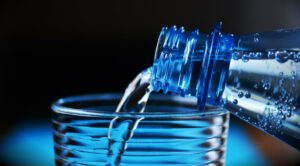Nobody enjoys taking a shower or bath with a low supply of water. To have the ability to turn on our faucets and have exactly the right amount of water pressure released each and every time is a goal that we all share. The ideal water pressure is one that can never be attained, but this should not be the case.
Issues With the Water’s Low Pressure
Many plumbers have seen it all, and as a result, they know a thing or two about why the water pressure in your home isn’t quite right. Although we have compiled a list of the water pressure problems that are most commonly experienced, we strongly suggest that you get in touch with a local qualified plumber before trying any major repairs on your own.
Your first order of business should be to figure out whether the low pressure is caused by a single or widespread problem.
- Is the problem occurring with both the hot and the cold water in the shower?
- Is the water pressure weak from the faucet in the sink that’s located in the same bathroom?
- Is there any other accommodation that appears to have the same problem?
As soon as you have the answers to those questions, you can start looking into the most common factors that contribute to low water pressure in showers.
Water Pressure Problems
It’s possible that the aerator screens in your faucets and showerheads must be replaced or cleaned. The majority of faucets and showerheads manufactured today are designed with an aerator that is positioned at the very end of the fixture.
Aerators are an essential part of any water tap or showerhead, and they can even be found in some sinks. They contribute to the conservation of water, filter out debris, and stop splashing. Most of the time, showerheads aren’t changed out for several years. The older models have designs that allow for less water flow, and this may be the cause of the lower water pressure you are experiencing.
It’s Possible That You Have a Crack Somewhere
It doesn’t matter how big or how small the leak is; you need to get it fixed as soon as possible. The quantity of pressure you enjoy will be negatively impacted by leaks of great magnitude, while leakages of a lesser magnitude will covertly contribute to your monthly water bill. Despite this, water leaks are notoriously difficult to locate and frequently go undetected until they cause more severe issues within the house.
A Showerhead With a Low Water Flow
Old low-flow showerheads can be too stingy with water and give the impression that there is insufficient pressure, which is counterproductive to the goal of water conservation. Changing the old showerhead with a new one is a simple do-it-yourself project, which is good news.
Showerhead With a Clogged Drain
Mineral deposits have a tendency to accumulate over time within the tiny holes of a showerhead, which can impede or completely obstruct the flow of water. Allowing the showerhead to spend the night in a bowl or bag that has been filled with vinegar will allow the mineral buildup to be removed. Next, clean up any remaining silt from the holes of the showerhead by brushing or poking it with a small tool.
A Mixing Valve That Has Seen Better Days
In the event that you have a shower or tub with a single-handle faucet, it is possible that it has an internal component known as a mixing valve. This valve regulates the ratio of hot to cold water that is delivered to the showerhead. It is possible for the temperature and pressure to become unbalanced if that valve becomes stuck or worn out. Because gaining access to the mixing valve and replacing it can be difficult, this task ought to be delegated to a skilled plumber.
Defective Water Pressure Regulating Mechanism
The function of the water pressure regulator is to ensure that the water pressure inside of your home remains within acceptable parameters (usually 46-60 psi). Unfortunately, this essential component can fail, which will allow the pressure to either drop dangerously low or rise dangerously high. A qualified plumber is the only person who should attempt to replace the water pressure regulator, which is typically attached to the water supply line just prior to the point where it enters the house.
Closed Valve
Your plumbing system is equipped with a number of valves spread out across it. You might experience low water pressure if any of these are partially closed, which is something that frequently happens by accident. Be certain that the water meter valve, the main shutoff valve, and each of the inline valves are completely open.
Concerns Regarding the Gravity-Fed System
Typically, gravity-fed systems are found in old houses that have not undergone any recent renovations. Because of the way that this system is designed, it may be challenging to achieve high water pressure in the shower. This is because it must be supplied through the pipelines using gravity. Fixing the supply line requires either a shower pump or a pump for the entire house to be fixed. This will assist in increasing the water pressure, which will ultimately result in a superior showering experience.
A Problem With the Water Heater
If you only experience low water pressure when you turn on the hot water, the problem could be with your water heater. Get in touch with a plumber to find out whether the component can be fixed or if it needs to be replaced.
Pipes That Are Leaking or Have Corroded
Old pipes, particularly those made of metal, have an increased risk of developing rust or corrosion on the inside. Mineral deposits that become lodged in a water supply pipe and cause blockages can cause water pressure issues in your shower (or other faucets). In a similar vein, if you have a pinhole leak somewhere in your plumbing system, you might notice that your water pressure is lower than usual. It is essential to quickly identify the source of the leak and make the necessary repairs.



